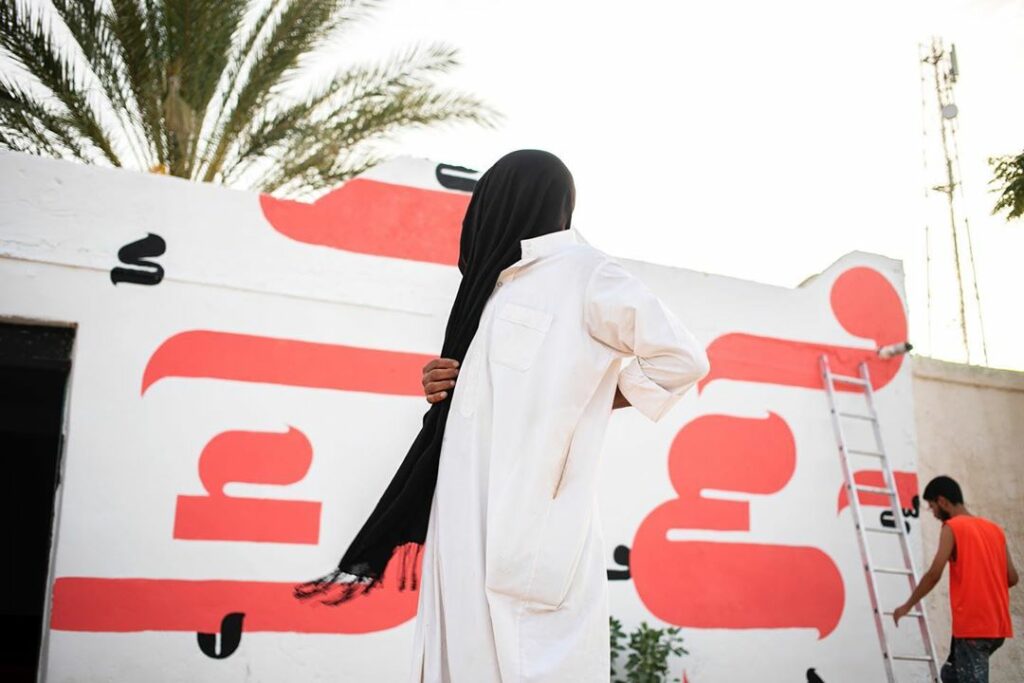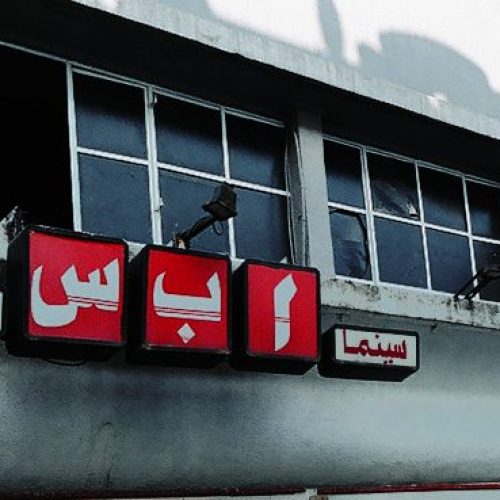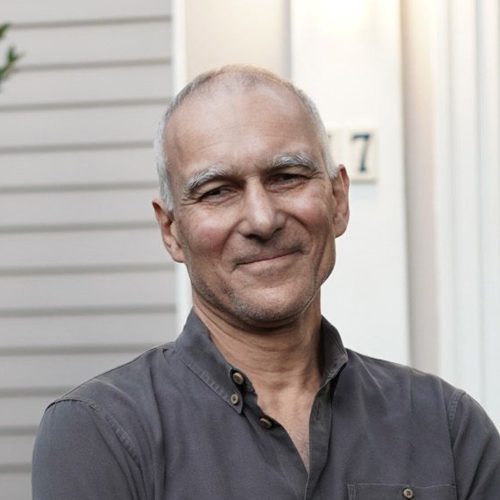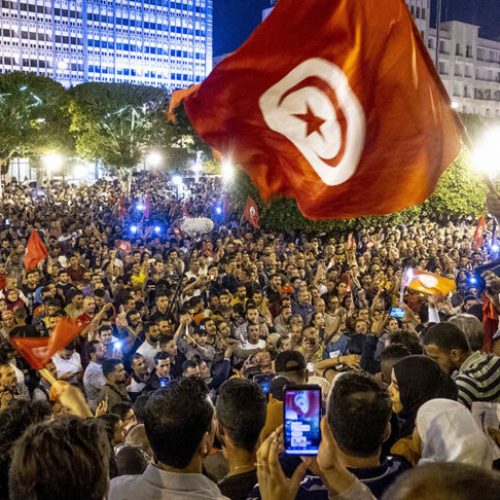If you’re familiar with Tunis’s art scene, you’ve probably already heard of ST4. The artist duo, comprised of 25-year-old Sadk Kaffel and 22-year-old Yassin Bouzid, have taken the North African capital’s scene by storm.
Having just wrapped up their first solo exhibition, one that proved the slow (and well overdue) democratization of the local creative scene, they’re pushing their mission to the next level by taking over a small village at the heart of the Tunisian desert for their most expansive installation yet. Derjine, as the village is called, is now home to 16 murals by ST4.
https://www.instagram.com/p/B0wNtN2hi-7/
As for the project, they’ve called it Geyla—an ode to the desert heat they endured whilst painting through the harsh June sun. More importantly, an unintentional assessment of the power of linguistics. Derived from the Arabic word ‘kayla’ (meaning ‘naptime’), geyla’s prefix is a prevailing marker of social class in Tunisia.
The rise of Tunisian aristocracy came with a methodical shift in the Tunisian dialect whereby the upper classes divorced themselves further from the working-class through the use of a ‘ka’, rather than ‘ge’. The velar sound has since weaved itself into the fabric of Tunisian society, used in the capital and the coastal cities bordering the Mediterranean.
https://www.instagram.com/p/Bz2tO_BhOxX/
But it no longer belongs to aristocrats, despite the prefix’s expansion to the bourgeoisie and working-class communities of the north, ‘ge’ remains synonymous with the lower-classes. And is often used to incite sneery, pejorative reactions. Of all Tunisian television character archetypes, ‘the country-side idiot’ (an archetype popularized through Ramadan TV series) exclusively uses ‘ge’, implicating the lower-class communities of Tunisia with the stereotype. By contrast, protagonists or ‘hero’ types exclusively use ‘ka’.
https://www.instagram.com/p/BzRMnzpBKur/
Derjine’s population—like most rural Tunisian societies—use ‘ge’, and with Geyla, ST4 probes the effects of such class distinctions. Through their murals (which have taken inspiration from the landscapes surrounding the village), ST4 takes its wider Tunisian audience on a journey to an oasis town so small it’s practically unknown. The interaction of the artist duo, their murals and Derjine’s 500 residents (whose date farms constitute their primary source of income) offer a deep insight into the hyperbolic stereotypes imposed on such communities.
The project comes alongside a movement aiming for the reclamation the use of ‘ge’ that’s gaining momentum, but has yet to see a real push. Perhaps Geyla proves itself a catalyst.









